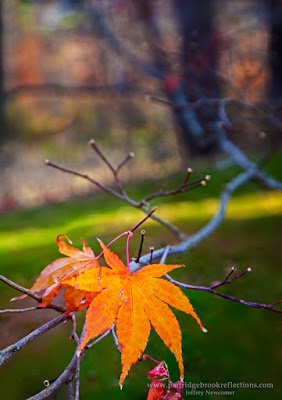
This week I want to briefly list a few important elements of composition for photographers. I am working to assemble the slides for my upcoming Basics of Digital Photography course and now that I have completed the composition section, it seems like a good time to review some of the key points with my blog audience. It will also serve as a quick on-line reference for my students who have dozed off during my droning presentation. I have covered much of this material over the years in various blog articles, but it is a valuable exercise to discuss a few of the "rules" of composition which I have found most helpful.
1) Let Your Eye be Your Guide:
 Every "rule" of composition gains its validity from the fact that people have decided that the application of the rule seems to result in a pleasing and balanced image. The Rule of Thirds, the Golden Rectangle, the Golden Spiral, all have varying degrees of expert and mathematical support, but it all comes down to how the picture looks and, most importantly how it looks to you. If your image seems to work for your eye, if it is balanced and communicates what you intend, then it is a success. So:
Every "rule" of composition gains its validity from the fact that people have decided that the application of the rule seems to result in a pleasing and balanced image. The Rule of Thirds, the Golden Rectangle, the Golden Spiral, all have varying degrees of expert and mathematical support, but it all comes down to how the picture looks and, most importantly how it looks to you. If your image seems to work for your eye, if it is balanced and communicates what you intend, then it is a success. So:Screw the "Rules"!!
Now let me list some of my rules.
2) Keep it Simple:
 |
| A Paragraph |
 |
| A Sentence |
3) Let's Get One Thing Straight:

Some of the most important rules are the simplest and should be the easiest to follow. It just drives me nuts to see beautifully captured images with wonderful color, sharpness and composition, but with just one fatal flaw. When I look at the horizon I feel like I'm about to fall over. Nothing speaks as much of carelessness and a lack of respect for the image
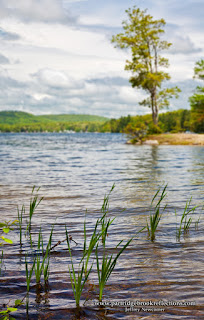 as a horizon line which is not straight. On occasion a tilted view can be intentionally employed for artistic effect, but come on! Most of the time it is just sloppy. In the field it is easy to get the line close to horizontal and in post there are various tools to rotate or crop the image. Both Lightroom and Photoshop allow you to run a ruler along the horizon and then let the program do the necessary correction. DO IT, and do it EVERY time. Then you won't have to explain why the ocean isn't cascading off the edge of you picture.
as a horizon line which is not straight. On occasion a tilted view can be intentionally employed for artistic effect, but come on! Most of the time it is just sloppy. In the field it is easy to get the line close to horizontal and in post there are various tools to rotate or crop the image. Both Lightroom and Photoshop allow you to run a ruler along the horizon and then let the program do the necessary correction. DO IT, and do it EVERY time. Then you won't have to explain why the ocean isn't cascading off the edge of you picture. 4) Drawing the Eye
 |
| Rule of Thirds |
There are various techniques to draw the viewer's eye along a path to the desired point(s) of emphasis in an image. Compositional guides such as the Rule of Thirds can suggest locations within the frame which through long experience seem to be natural spots of rest for key elements of an image.
 |
| Too ManyGuides |
Psycho-perceptual studies have tried and failed to explain why these locations seem to be more visually comfortable. Some are based on experience and others, such as the "Golden Spiral", are derived from complicated mathematical formulas, but they all seem to come down to two essential dictums:
1) Keep the focus of the image away from the center, both horizontally and vertically.
2) If that doesn't feel right, move the focus someplace else. Your eye is the absolute final arbiter. There are so many guides that it is difficult to find a part of your image that isn't close to one or more of them.
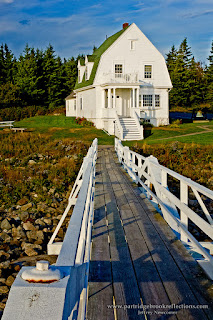
Other tools for drawing the eye include leading lines and diagonals, which can dictate the path the viewer will follow as he explores the image. An image with prominent diagonals generally appear stronger and more active. Selective focus, lighting and color can be used to highlight an important part of the image and all of these factors can be captured in the field and enhanced in post-processing.
 |
| Diagonal Strength |
 |
| Rule of Thirds, Leading Lines and a highlighted focus point. |
Images with a strong focus of interest can be created with the combination of a number of these focusing techniques. A key part of shooting is to arrange the view to help the viewer see what you see and want to share.

5) It's Good to Be Odd

For some reason odd numbers of items in an image appear stronger. One is better than two, three is better than two or four. It just is. One is peaceful and focused. Two leaves you wondering which to look at and three, well that's
 just a menage. As we get much above four and five the relationship begins to be less obvious, but it is probably still there. I would like to show you many examples of weak images of two flowers, but in searching, I discovered that I seem to have intuitively avoided pairs of anything. About the only set of two that I seem to like are my children.
just a menage. As we get much above four and five the relationship begins to be less obvious, but it is probably still there. I would like to show you many examples of weak images of two flowers, but in searching, I discovered that I seem to have intuitively avoided pairs of anything. About the only set of two that I seem to like are my children. 6) Cropping : Less is More
 |
| Galapagos Dawn |
 throw any of it away, but most often less IS more. I do my best to frame every image to perfection, but the fact is that the constraints of the usual viewfinder ratio of 3:4 seldom matches the best framing for the image. Rarely I will bring an image up on my screen and, as I reach for the crop tool, I have the awkward sense that the cropping is perfect as captured. It is a strange feeling and I don''t trust it.
throw any of it away, but most often less IS more. I do my best to frame every image to perfection, but the fact is that the constraints of the usual viewfinder ratio of 3:4 seldom matches the best framing for the image. Rarely I will bring an image up on my screen and, as I reach for the crop tool, I have the awkward sense that the cropping is perfect as captured. It is a strange feeling and I don''t trust it. 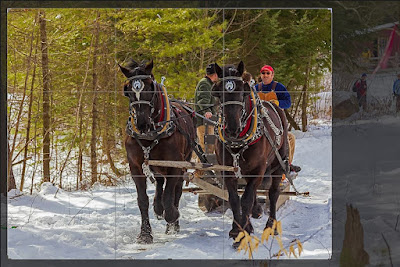 Cropping is done for a number reasons, mostly to remove extraneous material and enhance the composition. It is usually a matter of simplifying the image and adjusting the composition to remove distractions and strengthen the focus on the subject. Cropping is also done to size the image to fit the desired digital or print output, but this step is best applied at the end of the editing process and after the full image has been safely archived. I always save an untouched version of an image before I do even the most necessary cropping.
Cropping is done for a number reasons, mostly to remove extraneous material and enhance the composition. It is usually a matter of simplifying the image and adjusting the composition to remove distractions and strengthen the focus on the subject. Cropping is also done to size the image to fit the desired digital or print output, but this step is best applied at the end of the editing process and after the full image has been safely archived. I always save an untouched version of an image before I do even the most necessary cropping. 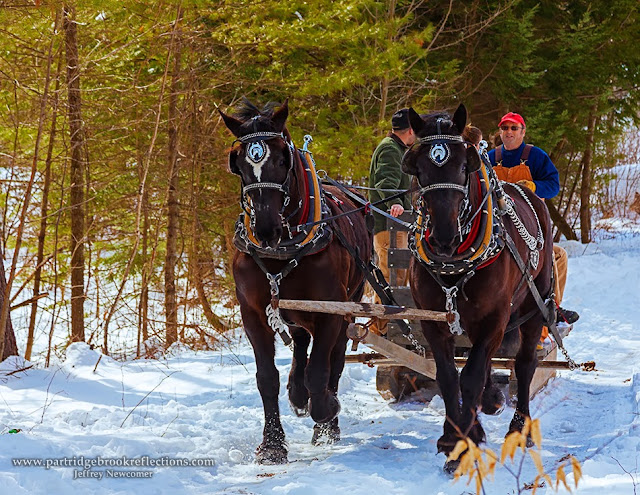
It is always painful to discard portions of an image. Every cut reduces the resolution, but that is why sensors were created with ridiculous numbers of pixels.
7) Head and Nose Room

Whether it's a bird in flight or a child directing a longing glance toward a table of desserts, it is important to provide space in the direction of the movement or view. Occasionally this rule can be broken to create a sense of tension, but the frame of an image is a physical limit and it is usually uncomfortable to crash your subjects against that wall. This rule combines well with the Rule of Thirds. As you move your subject away from the
 |
| Grizzly Alaska |
 |
| Sometimes Breaking the Rules Can Work and is Deserved |
8) Eliminating Distractions
Distractions come in all forms, a branch peaking in on the side of the frame, a bright spot of sunlight illuminating an otherwise placidly shadowed forest floor or a pack of cigarettes discarded on the lawn. It can be anything that diverts the viewer's eye from the subject, but, for we landscape photographers, more than anything, it means those God Damn Wires!
 |
| Harrisville Tower |
 |
| A Few Steps Closer |
 |
| Harrisville Library Wires |
I usually begin by trying to convince myself that the wires aren't really that much of a distraction, but more often, as I study the image, the scars become increasingly apparent and I eventual surrender to the need to clone. Improvements in Photoshop's Cloning and Healing brushes have made this process easier and more precise, but it still takes a persistent dedication to the perfection of the image and the message.
 |
| Wires Cloned |
 |
| Still a Little Work Needed on the Reflections |
Occasionally a slight shift in position may not totally remove the wire, but it may move the problem to a area of the image where it becomes easier to clone. In the picture of the old Spofford Fire Station, the wires went across the building making precise cloning difficult, but by moving a few steps closer I was able to shift them over the sky which greatly simplified the process. Getting closer to the building did increase the key-stone distortion, but this was corrected with a perspective adjustment in Photoshop.
 |
| Old Spofford Fire Station |
The secret to dealing with distractions is first to notice them, preferably in the field. The sooner those miserable scars are detected the easier they will be to avoid or remove.
 | ||
| Small Things Can Distract |
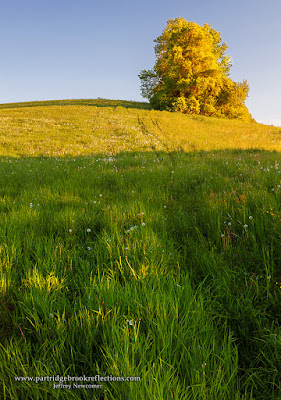
I'll finish with a return to my first rule. The success of your images will be judged by human eyes and your eyes are as good as anyone's. It is true that your view of your image is biased by the fact that you already know what you are trying to say. It takes practice and care to communicate that same understanding to others, but the first step is to make the image work for you. When an image works it is likely that you will notice in retrospect that it complies with one or several of the guides for good composition, but the best guide is still your own eyes.
Unless you suck at composition - If so, reread the stuff above, or better, take my course!
Jeffrey Newcomer
Partridgebrookreflections.com


Very useful and informative composition tips . Like and admire your post .
ReplyDelete